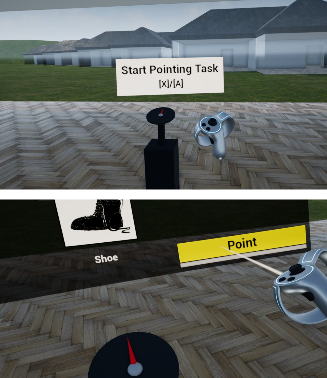“Converging perspectives – Using virtual reality to evaluate user-centred architecture”
Project information
Saskia Kuliga
Co-AuthorsBauhaus PostDoc Stipendium (Bauhaus-Universität Weimar, Bauhaus Research School), Prof. Dr. Dirk Donath, Vertr.-Prof. Dr. Sven Schneider, Junprof. Reinhard König (Bauhaus-Universität Weimar)
MentorsDr.phil. Saskia Kuliga
Summer semester 2017
Faculty:
Architecture and Urbanism
Degree programme:
Architecture (Bachelor of Science (B.Sc.)),
Architecture (Master of Science (M.Sc.))
Free project
Contributors:
Prof. Dr. Christoph Hölscher (ETH Zürich),
Prof. Dr. Ruth Dalton (Northumbria University)
Project description
Architects strive for designing aesthetic and functional buildings that support our everyday needs, abilities and tasks. However, even buildings that are honored for their innovative design can be remarkably hard to understand for building users (Dalton & Hölscher, 2016; Dalton, Kuliga & Hölscher, 2013).
One reason is that users understand built space quite differently than architects (Dalton et al., 2012). Another reason is that during the architectural design process, architects have to take care of multiple design requirements (Krukar, Dalton & Hölscher, 2016). Consequently, within the complexity of the design process, users’ needs can easily fade into the background. Furthermore, the methodologies for ‘building usability’ evaluation are not (yet) a common standard in the design studio. Architects also typically rely on their intuition and implicit knowledge (Zeisel, 2006), rather than a systematic evaluation of user feedback. They can encounter difficulties with immersing themselves into an eye-level perspective of the users (Hölscher, Brösamle & Dalton, 2010). Thus, despite the architects’ aim to design ‘user-friendly’ and ‘usable’ environments, building users can (and do) experience difficulties with interactions, such as an efficient, effective, and pleasant wayfinding process (cf. Kuliga, 2016).
In this project, I follow an interdisciplinary approach for examining virtual reality as an early, user-centred building evaluation tool for architectural planning.







